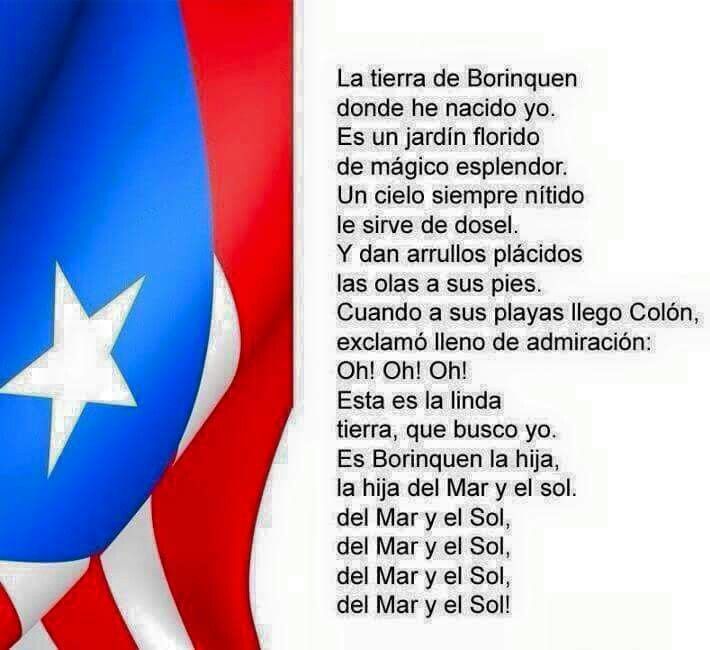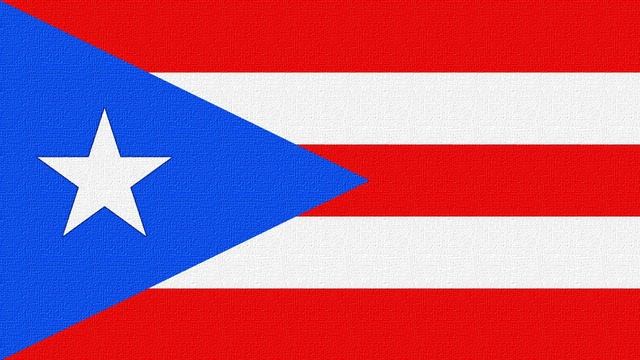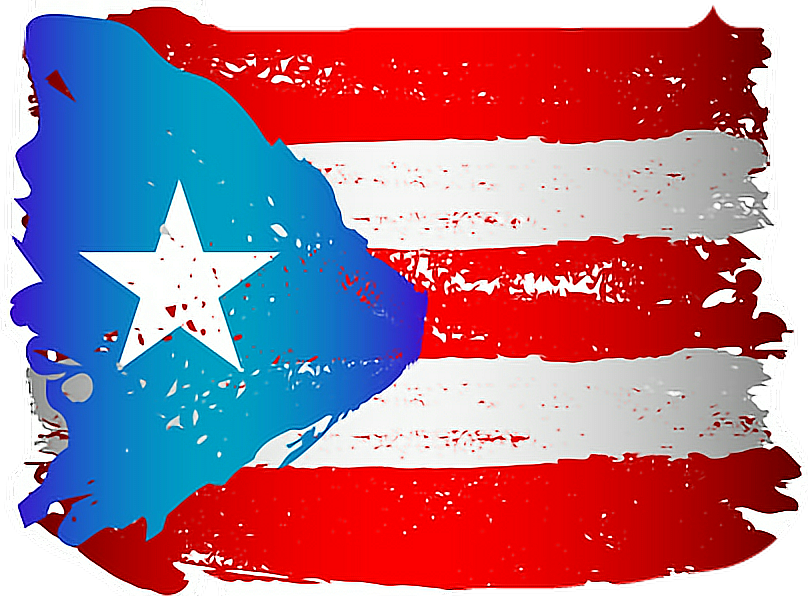Himno revolucionario de puerto rico: Himno Revolucionario de Puerto Rico
Más que un himno nacional. Historia detrás de la danza La Borinqueña
Hace unos años, mientras observaba durante varios días una competencia deportiva, me cuestioné porque mientras en otros lugares los himnos eran marchas con fusiles y disparos, el nuestro era una danza que hasta a Cristóbal Colón mencionaba con cierto beneplácito y admiración. Eso me llevo a buscar la información de La Borinqueña, nombre del himno de Puerto Rico, que hoy comparto con ustedes.
Comienzo por señalar que la versión original de la danza data de finales de los años 60 del siglo XIX y es atribuida por unos al catalán Don Félix Astol y por otros al sangermeño Francisco Ramírez Ortiz. Los versos que se le atribuyen a Félix Astol o Ramírez Ortiz tienen el título de La Almojábana y comenzaban de la siguiente manera:
Bellísima trigueña
imagen del candor
del jardín de borinquen
pura y fragante flor
Según menciona Aurelio Tió, la melodía pudo surgir anónimamente pues aparenta ser una melodía española anónima de origen común.
¿Cómo llega entonces a convertirse en el himno nacional esta danza de origen romántico?
El motivo que convierte esta danza en un himno revolucionario no es otra cosa que el levantamiento ocurrido en Puerto Rico el 23 de septiembre de 1868 y que terminó por llamarse el Grito de Lares.
Nos dice Pedro Malavet Vega en su libro Historia de la canción popular en Puerto Rico (1493-1898):
Ramón Emeterio Betances, líder del proceso revolucionario, pedía “un himno que haga salir fusiles, fusiles… que arrastre las piedras y sople fuego sobre los déspotas”. Es cuando Doña Lola Rodríguez de Tió se da a la tarea de escribir unos versos revolucionarios que aún resuenan en la memoria colectiva del pueblo puertorriqueño, particularmente en la de sus patriotas. Los versos que terminaron utilizando la estructura verbal y musical de la danza La Almojábana fueron los siguientes:
Despierta borinqueño
que han dado la señal
Despierta de ese sueño,
que es hora de luchar
A ese llamar patriótico,
¿no arde tu corazón?
Ven, nos será simpático el ruido del cañón
Nosotros queremos la libertad,
nuestro machete nos la dará
¡Vámonos, borinqueños
vámonos ya!
Que nos espera ansiosa
¡Ansiosa la libertad!
Esta versión revolucionaria fue difundida de manera oral y permanece aún vigente en nuestros tiempos para comenzar y/o terminar algún acto que recuerde a algún héroe que haya luchado por la independencia de la isla o alguna actividad que reclame la independencia para Puerto Rico.
Por último y no menos importante cabe señalar que desde 1952 se utiliza de manera oficial como himno del terruño borincano la versión solemne de La Borinqueña compuesta por Ramón Collado y que la misma estuvo carente de letra hasta que en el 1977 se le adaptan unos versos escritos por Manuel Fernández Juncos. (Ley Núm. 123 del 27 de junio de 1977)
La tierra de borinquen
donde he nacido yo
es un jardín florido
de mágico primor
Un cielo siempre nítido
le sirve de dosel
y dan arrullos plácidos
las olas a sus pies
Cuando a sus playas llegó Colón
exclamó lleno de admiración
¡Oh, oh, oh!
Esta es la linda tierra
que busco yo
es Borinquen la hija
la hija del mar y el sol.
Francisco Javier Quiñones es profesor de música y dirección coral. Su extensa carrera en el ambiente artistico, educativo y musical de más de 25 años le ha permitido trabajar con un sin número de jovenes y cantantes de renombre presentandose también en grandes escenarios abarcando géneros cultos y populares.
Puedes buscar mas información en su página:
www.fjmusicpr.com
Himno Revolucionario de Puerto Rico Quiz
Himno Revolucionario de Puerto Rico Quiz
too few (you: not rated)
Category
History
Language
Spanish (Español)
Questions
9
Tries
9
Last Played
5 Oct, 2022
Sound On/Off
Remaining
Correct
Press play!
0%
0:00.0
Quit
Again
This game is part of a tournament
You need to be a group member to play the tournament
Join group, and play Just play
Your Scorecard
Try again!”>The scorecard of a championTime
0:00.0
Your game must be published for scores to save!
Total Points
Today’s Rank
—
Login to participateLogin to participate
Login to participate
Today’s Points
Game Points
9
100% needed
Something different?
Surprise Me!
Next Game »
| Highscores (25 registered players) | ||||
|---|---|---|---|---|
| Member | Score | Time | Date | |
| 1 | da vid (el q te robo el 1st) | 100% | 0:07.8 min. | 26 Aug, ’22 |
| 2 | MaiteRivera | 100% | 0:08.4 min. | 31 Aug, ’16 |
| 3 | CristinaRoman | 100% | 0:09.2 min. | 26 Feb, ’16 |
| 4 | Belen77 | 100% | 0:10. 4 min. 4 min. | 16 Apr, ’18 |
| 5 | JeremyDavid | 100% | 0:10.7 min. | 12 Nov, ’15 |
| 6 | juandiego.awesome | 100% | 0:10.8 min. | 10 Nov, ’15 |
| 7 | ohxjong | 100% | 0:11.3 min. | 10 Nov, ’15 |
| 8 | DjulianOrtiz | 100% | 0:11.6 min. | 14 Feb, ’19 |
| 9 | isa_marrero | 100% | 0:12.0 min. | 10 Nov, ’15 |
| 10 | EjuanElduro | 100% | 0:12.0 min. | 10 Nov, ’15 |
| 11 | Yeriel360 | 100% | 0:12.7 min. | 10 Nov, ’15 |
| 12 | DivaBoo | 100% | 0:13.0 min. | 25 Feb, ’16 |
| 13 | Lux Crownguard | 100% | 0:14. 0 min. 0 min. | 18 Feb, ’16 |
| 14 | CRAZY DAVE | 100% | 0:17.2 min. | 24 Nov, ’19 |
| 15 | El_Invader | 100% | 0:18.3 min. | 26 Feb, ’16 |
Latest Activities
No actions to report right now.
modern jazz news, reviews, interviews
jazzquad.ru is an electronic publication in Russian dedicated to everything related to jazz, blues and ethnic music, as well as musical styles bordering on these areas. In addition to news, jazzquad.ru contains articles about performers, disc reviews, interviews with musicians, reports from concerts and festivals, information about books, new releases, and much more.
jazzquad.ru is the direct successor of the printed magazine Jazz-Kvadrat, published in Minsk since 1997 to 2009 and for a number of years was the world’s only Russian-language magazine on the above topics. more
more
news
10/31/2022
JazzWeek at the peak of autumn
published 2022
Pretzil Stex – Garden Variety
published 2022
Compassionizer – Narrow is the Road
news
30.10.2022
Red Sea Jazz – 2022
published in 2022
Mata Atlantica – Retiro e Ritmo
published in 2022
Longtoe – Le Banquet
news
29.10.2022
The last of the Mohicans left
Published 2022
Barbara Panther & Matthew Herbert – Maramuke
published 2023
Lakecia Benjamin – Phoenix
news
27.10.2022
Volkov ManiFEST – 2022
published 2022
AKE – It’s a good year to die
published in 2022
Leandro Ragusa & Quinteto Metropolitano de Vientos – Eolia, en vivo
news
10/14/2022
“Jass”: the history of Sverdlovsk jazz at an exhibition in Yekaterinburg
Published 2022
Brooks Young – Supply Chain Blues
Published 2022
Brian Landrus – Red List
news
03. 10.2022
10.2022
The Museum of Music will present an exhibition dedicated to the 100th anniversary of Russian jazz
published in 2022
Kshetra – This is that
published in 2022
Franck Biyong – Kunde
news
09/30/2022
JazzWeek: Foster rules!
Published 2022
Kate Baker & Vic Juris – Return To Shore
Published 2022
Dave Liebman – Trust and Honesty
news
09/26/2022
Ad mora da: Viktor Semashko presented the multimedia album
published 2022
Marco Pignataro – Chant For Our Planet
published 2022
Keith O’Rourke – Imperfect Perfectionist
news
19.09.2022
Colisium Moscow 2022 – Destinations
published 2022
Amjad Ali Khan / Wu Man – Music For Hope
Published 2022
Noam Lemish – Twelve
news
09/09/2022
Colisium Moscow 2022
published in 2022
Nichunimu – Un Cacho de Metal, Un Resto de Vaivén
published 2022
Kristin Berardi – The Light & the Dark
news
07. 09.2022
09.2022
VII International Festival “Coffee&Jazz”
published 2022
Joe Policastro Trio – Sounds Unheard: Odds and Ends (2012-2022)
published 2022
Harry Bartlett Trio – Wildwind
news
06.09.2022
“Capital Jazz” in the cinema club “Eldar”
published 2022
Claudia Acuña – DUO
published in 2022
Fabrizio Piepoli – Maresia
news
08/28/2022
JazzWeek says goodbye to summer
published 2022
Jeremy Rose & The Earshift Orchestra Featuring Simon Barker and Chloe Kim – Disruption! The Voice of Drums
published 2022
Pablo Lanouguere Quintet – Altar
news
08/23/2022
Jazz Over Water
published 2022
Gonzalo Rubalcaba – Turning Point / Trio D’été
How women led the energy revolution in Latin America
“Guys, you have the sun. You have wind. Why can’t I see rooftops covered with solar panels?” Electricity bills in Puerto Rico are higher than, for example, in any US state, despite the fact that 45% of the island’s population lives below the poverty line. Several women undertook to radically change the situation – and they succeed
You have wind. Why can’t I see rooftops covered with solar panels?” Electricity bills in Puerto Rico are higher than, for example, in any US state, despite the fact that 45% of the island’s population lives below the poverty line. Several women undertook to radically change the situation – and they succeed
Before Vanessa Carballido launched Genmoji, an energy development startup in Puerto Rico, all she knew about energy was how big the monthly bill from the Puerto Rico Electricity Authority (PREPA) was.
At prices ranging from 22 to 27 cents per kilowatt-hour, Puerto Ricans pay more in their electricity bills than households in any US state. The average electricity bill for a family of five in Puerto Rico is $300. Given that 45% of the island’s population lives below the poverty line, and the median household income is $19343 per year, such a cost of electricity is not only unacceptable, but also unfair.
Meanwhile, while PREPA serves 1. 5 million customers, the agency is now $9 billion in debt, and creditors reportedly said a week ago they were ready to back down on the electric utility’s debt restructuring offer. To make matters worse, PREPA is the last energy company in the US to generate energy from oil.
5 million customers, the agency is now $9 billion in debt, and creditors reportedly said a week ago they were ready to back down on the electric utility’s debt restructuring offer. To make matters worse, PREPA is the last energy company in the US to generate energy from oil.
These statistics and the desire to create new economic opportunities for Puerto Rico led Vanessa to start working with her husband and co-founder Francisco Laba on renewable energy projects for commercial and industrial clients across the island.
Affordable Energy = Stronger Economy
In the early days of Genmoji, Vanessa continued to work as an intellectual property lawyer with background in data management to keep paying her bills while she studied energy law and the technical aspects of the industry. However, after Hurricane Maria swept over the island in 2017 and the need for affordable energy for all the inhabitants of the island became extremely urgent, she and Francisco did not hesitate to take on the task.
“I believe that in Puerto Rico, energy remains one of the key economic components of the development of the region, which was not just neglected: even the people themselves, until recently, did not consider it critical to the development of the community,” says Vanessa. — Residents of the island have long known about corruption and complain about its various aspects. But until a few years ago, no one read the bill from PREPA. I think Hurricane Maria made a difference because people saw a lot of people go without electricity for a whole year. Some people still live like this. It was like an awakening and everyone was like, “Wait, what’s going on?”
The solution lies in the problem
Given Puerto Rico’s natural resources and urgent need for equal distribution of energy, Vanessa sees the island as an ideal testing ground for renewable energy. She recalls how a friend from Spain told her: “Guys, you have the sun. You have wind. Why can’t I see rooftops covered with solar panels? Why don’t I see turbines like in Europe?
You have wind. Why can’t I see rooftops covered with solar panels? Why don’t I see turbines like in Europe?
“If we can change the way we use and distribute energy locally, we can change Puerto Rico,” says Vanessa. — We could change our approach to doing business, to attracting companies. So many companies don’t work here because of how expensive our energy is, how inefficient our system is.”
Since its inception, Genmoji has recruited several energy consultants from California who want to either test solutions or implement ideas they have learned elsewhere.
“I think this is an indication of Puerto Rico’s potential to be a testing ground for a new energy model that is replicable and embodies sustainability,” says Vanessa.
One of the factors that gives Genmoji an edge in the field of renewable energy is AIRMOJI, the latest maglev wind turbine that uses natural wind and artificial wind from industrial air conditioners and exhaust systems.
SOLAR LIBRE
Thanks to sensors for data collection and AIRMOJI, Genmoji was able to continue operating during the COVID-19 pandemic when other renewable energy projects were temporarily closed, including those of Solar Libre, a non-profit organization from Puerto Rico that provides energy 130 settlements free of charge for recipients.
In early January, students who participated in the Solar Libre student program worked as quickly as possible to assemble and distribute solar energy systems between camps for people left homeless by several large earthquakes that destroyed more than 8,000 homes .
When Women Lead
Solar Libre Field Manager Paola Panyan manages all of the organization’s projects on the island. According to her, it is the students of the student program that are moving the initiative forward. The first group consisted of five women and three men. The difference in gender ratios may not be large, but it is important given that while women make up more than 50% of university students in most countries, they represent only 32% of people working in the renewable energy industry, according to according to Women In Renewable Energy (WIRE) Network.
The difference in gender ratios may not be large, but it is important given that while women make up more than 50% of university students in most countries, they represent only 32% of people working in the renewable energy industry, according to according to Women In Renewable Energy (WIRE) Network.
The Clinton Global Initiative WIRE is a professional development group for women who work in the energy sector in the Caribbean and Africa. This network has proven to be an incredible resource for Vanessa and Genmoji in terms of access to technical data and mentors.
In an effort to maintain momentum, Genmoji has entered into a partnership agreement with Solar Libre under which the company will work on future Genmoji projects with at least three or four alumni of the nonprofit’s apprenticeship program.
Like Vanessa, Paola didn’t always have a career in solar energy. When she first started working with Solar Libre, she plunged into the field out of sheer curiosity, but then she saw new opportunities.